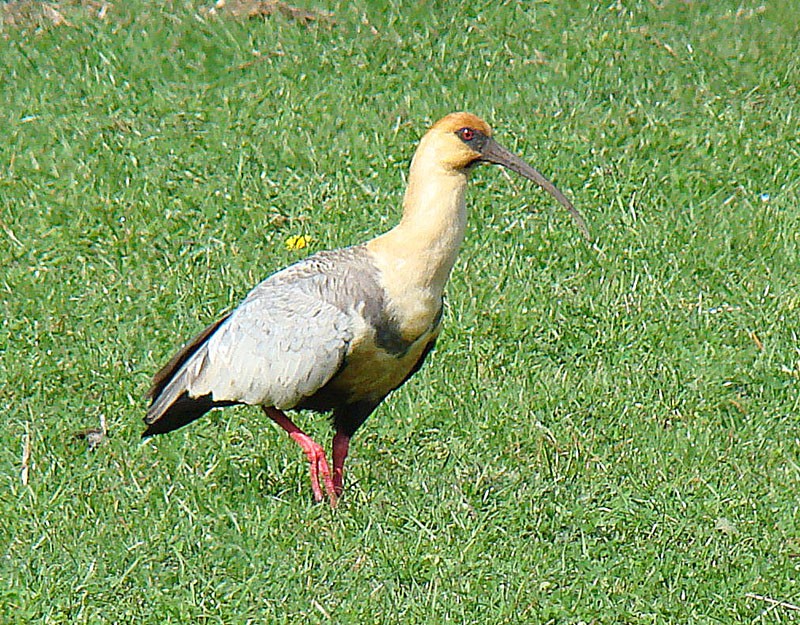Black-faced Ibis
A species of South American Grassland Ibises Scientific name : Theristicus melanopis Genus : South American Grassland Ibises
Black-faced Ibis, A species of South American Grassland Ibises
Botanical name: Theristicus melanopis
Genus: South American Grassland Ibises
Content
Description General Info
Description
It has a total length of approximately 75 centimetres (30 in). The head, neck and lower chest are buffish, the crown and nape are cinnamon, the upperparts and (often incomplete) chest-band are grey, the belly and flight feathers are black, and the wing-coverts are whitish (though not contrasting strongly with the grey upperparts). The bill, throat-wattle and bare skin around the eyes are blackish and the legs are red. The similar buff-necked ibis is almost entirely restricted to warm regions, has contrasting large white wing-patches, a dark grey (not buff) lower chest, and its throat-wattle is smaller than in the black-faced ibis. 
Size
76 cm
Colors
Brown
Black
Yellow
Bronze
Gray
Life Expectancy
35 years
Nest Placement
Ground
Feeding Habits
Black-faced Ibis primarily feeds on invertebrates and small vertebrates. It forages in fields and wetlands, probing with its long bill. Notably, black-faced Ibis prefers foods like insects, worms, and small amphibians, exhibiting adaptability in varied environments.
Habitat
Black-faced Ibis thrives in temperate open and semi-open landscapes, including grasslands, marshes, and open forests. Adaptable to various environments, they are found in pastoral lands, agricultural areas, and along water bodies like lakes and rivers. Their altitudinal range extends from sea level to mountainous areas at 3000 meters, with nesting in diverse locales from rocky cliffs to vegetated reedbeds.
Dite type
Herbivorous
General Info
Feeding Habits
Bird food type
Distribution Area
The black-faced ibis is mainly found in southern South America, ranging throughout most of southern and central Argentina and Chile, where it occurs from sea-level to an altitude of approximately 2,500 metres (8,200 ft). It also occurs very locally in coastal Peru. While it remains fairly common in Argentina and Chile, this species has now been almost entirely extirpated from the Peruvian part of its range. Overall the species is not threatened, and consequently assigned Least Concern by the IUCN. 
Species Status
Not globally threatened.
Scientific Classification
Phylum
Chordates Class
Birds Order
Pelicans and Relatives Family
Ibises and spoonbills Species
Black-faced Ibis 